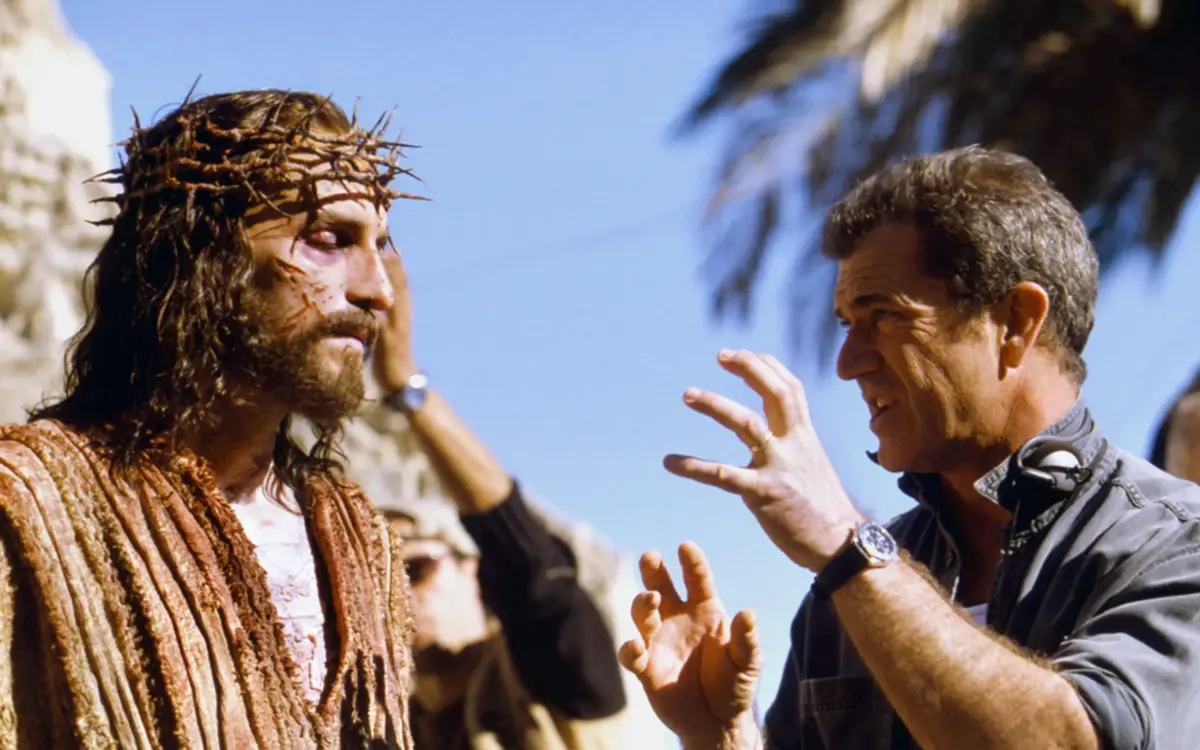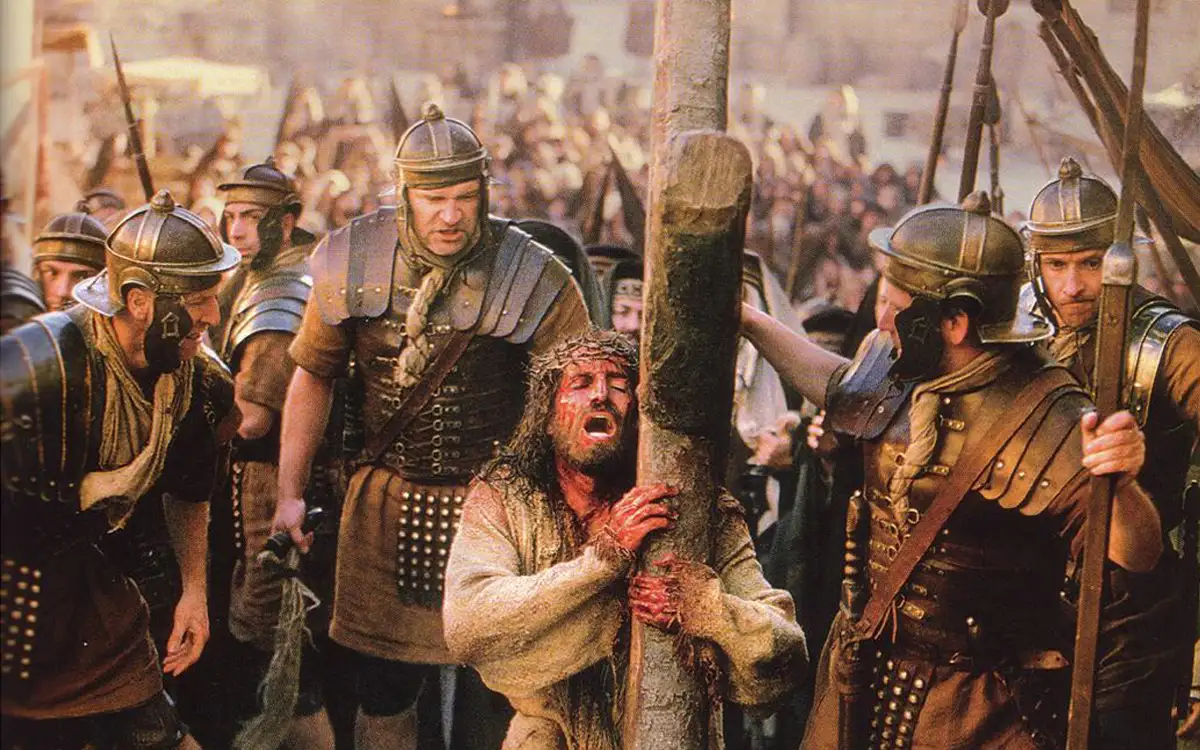
It’s fair to say that Mel Gibson’s graphically intense and emotionally charged depiction of Jesus’ suffering and crucifixion ranks among the best, and certainly the most popular, films ever made about the life of Christ. Alongside the 1979 classic Jesus, which I previously reviewed, The Passion of the Christ remains a staple for evangelists and church communities sharing the Gospel. Since you can’t talk about one without mentioning the other, let’s balance the boat!
This isn’t a traditional movie review, just as the earlier piece wasn’t, and you’ve probably watched the film countless times. I’ll instead zero in on elements worth noticing on a rewatch, particularly the film’s masterful, wordless nods to biblical details that elevate its storytelling.
Centred on Christ’s suffering and crucifixion, the film opens in the Garden of Gethsemane with Jesus praying in agony. A subtle yet touching detail emerges as He returns, visibly weakened, to rouse the three sleeping disciples and urge them to pray. The depiction underlines Matthew 26:41, “The spirit indeed is willing, but the flesh is weak.” It’s the kind of quiet moment you might overlook on a normal viewing, yet Gibson captures it with precision to set the tone for what follows.
In the following scenes, while Jesus lies on the ground, a serpent appears. The scene is not described in the bible, and the segment could have worked without the snake, yet Gibson deliberately includes it, adding symbolic weight to the narrative. In the film, as Jesus rises, He crushes the serpent, visually representing triumph over evil and foreshadowing His upcoming crucifixion. This scene also recalls His words to the disciples in Luke 10:19: “I have given you authority to trample on snakes and scorpions and to overcome all the power of the enemy; nothing will harm you.”
Normally, watching a film in a language you don’t understand can feel off-putting. Not here. The dialogue in The Passion of the Christ is delivered in Aramaic, Hebrew and Latin, with subtitles in the viewer’s language (English in my case). Rather than distancing you, this choice enhances the sense of authenticity by drawing you into the historical moment without modern gloss.
A tiny but crucial detail Gibson preserves is how Judas addresses Jesus. In the film, before the infamous kiss, Judas greets Him “Rabbi,” a respectful title for Teacher. This mirrors scripture, where Judas never refers to Jesus as “Lord,” unlike the other disciples, such as Simon Peter. The distinction also underlines Judas Iscariot’s distance from Christ’s true identity, making the betrayal even more pointed.
The following sequence shows one of the three disciples running away in fear. This visual brings out Jesus’ earlier words, when He quoted Zechariah 13:7: “I will strike the shepherd, and the sheep will be scattered” in Mark 14:27.
During the Sanhedrin trial, Mel Gibson emphasises the moment when an official strikes Jesus after He replies to the high priest. John 18:22 records: “When Jesus said this, one of the officials nearby slapped him in the face. ‘Is this the way you answer the high priest?’ he demanded.” Accentuating this scene was key because it not only shows the humiliation Jesus endured but also foreshadows Paul’s similar experience before the council years later in Acts 23.
Related Stories: 7 Best Ugandan Documentaries and Films to Watch
Related Stories: Night Always Comes (2025) Movie Review – Vanessa Kirby Commands Netflix’s Grim Thriller
Another minor detail that stood out is the high priest Caiaphas tearing his robe following Jesus’ response, a gesture signalling outrage or blasphemy. This is a common act in numerous biblical instances, where tearing garments signifies intense emotion, shock, or the recognition of covenant-breaking. I’m curious why the other priests did not do the same.
Midway through the movie, I noticed three distinct colour schemes. The first is a dark, except for the torches, almost colourless retro tone for the initial scenes of capture. The second is a reddish-brown retro tone used for the torture and crucifixion scenes, perfect for the blood and the graphic intensity of the film. The third scheme appears in the flashback sequences, like one where Jesus crafts a table while his mother, Mary, prepares Him something. Tradition holds Joseph had died by this stage, and indeed, the scene shows only the two of them.

Even after multiple re-watches over the years, the scourging scenes remain harrowing. Mel Gibson’s focus on brutality confronts viewers with the reality of crucifixion, a strength that also fuels controversy.
The film preserves multiple shots of John and Mary in a single frame, alluding to Jesus entrusting His mother to John’s care at the cross. As recorded in John 19:26-27, ‘…Woman, here is your son,’ and to the disciple [John], ‘Here is your mother…’ This detail also aligns with one of the Gospels that identifies John as the disciple whom Jesus loved.
My final observation: As Jesus staggers with the cross along the Via Dolorosa, the film intercuts flashes of His triumphal entry into Jerusalem, riding a colt, with mats laid, psalms sung in His honour, and people shouting “Hosanna.” These are the same people who, only days later, having called for His crucifixion, now lead Him to Golgotha. From Hosana to Crucify Him – Kim Sullivan.
All said, despite controversies, Mel Gibson’s The Passion of the Christ distils the Passion into a powerful visual narrative, letting Scripture’s details speak without heavy dialogue. Unlike the 1979 Jesus film, it gives a raw glimpse of Christ’s ordeal, filled with subtle details many directors might overlook. In my view, the film’s gospel lies in showing, not telling. Let’s share in the comments: what scriptural details did you notice in the film that I may have missed?
Related Stories: Blink Twice (2024) Movie Review – Zoë Kravitz’s Directorial Debut
Related Stories: Why Christmas Excitement Is Waning
If you prefer this kind of content, join our WhatsApp channel for more!